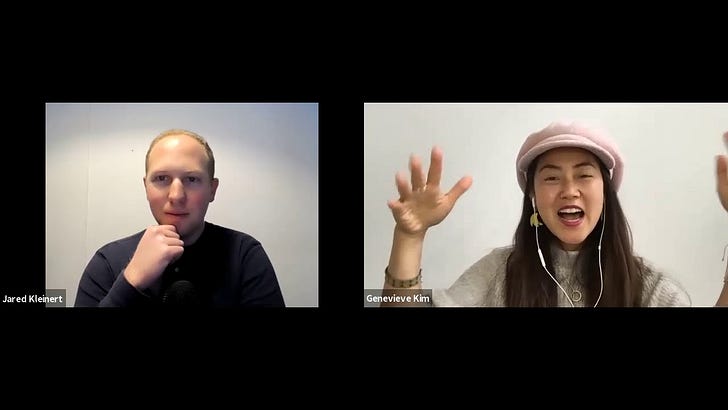If you were able to provide MORE value for your clients, and could charge them accordingly for your additional services, would you do it?
Most entrepreneurs, myself included, would say YES to this opportunity if we really enjoyed working with our clients and truly believed in our work.
Personally, I’m fortunate enough to work with inspiring entrepreneurs, thought leaders, and creators of globally recognized brands through Meeting of the Minds, and so I’d love to work with my Ideal Clients for as long as possible.
(And it certainly wouldn’t hurt to maximize our profits while we’re providing high-quality counsel either. Goooooooo capitalism!!!)

One of the fundamental practices I’ve incorporated into my businesses is the creation of a value ladder, although I execute this methodology in a different way than many online course creators, marketers, or copywriters would suggest.
The Value Ladder
Most online “thought leaders” would tell you to start by building a “free” offer, then adding four or five upsells from there. Do it all at once, create a funnel, go live, and print money, they’ll tell you…
I say that’s BS.
Especially if you’re running a service-based business (i.e. any type of consulting business, “done-for-you” marketing or design work, etc), I recommend you first build a proven core offer and then develop an upsell and a downsell.
This means your “value ladder” may only have one rung when you start your business, and then might only have two or three steps during the first few years of operations.
Most advice you read online will suggest you create a “free” offer (like an email opt-in for a free PDF or listicle), then upsell to a low-priced product such as a book or widget less than $100, and continue climbing the ladder from there as your Ideal Clients build trust and intimacy with you and your brand.
This strategy leaves a shaky foundation for your value ladder and can lead you to choose the wrong ladder, develop an ineffective base or angle for your ladder, and/or prevent you from adding more “weight” to your value ladder over time.

Build Your Core Offer, Then An Upsell and Downsell In Order to Strategically Maximize Profits
With simplicity, there’s leverage.
With your core offer in mind, or the “best bang for your buck” that you can offer clients while reserving the ability to scale your business as well, you can build the lower and higher rung(s) on your ladder to easily transition someone from one product or service to another.
Here’s a real-world example.
When I started my marketing consulting business, I charged my first-ever client (a former Fortune 500 CMO and #1 NYT bestselling author) via monthly retainer at $5,000/mo with a three-month minimum.
This “package” resulted in five months of client work at a premium price (I was only 18 at the time) and gave me the ability to turn our results into a case study I could shop around to other authors, professional speakers, and small business owners who wanted to benefit from our marketing consulting services.
For the first year or so, I held to this pricing format and built a replicable framework for servicing clients. Over time, I realized that some of our otherwise “Ideal” clients weren’t comfortable making the front-end investment of time and money I required.
To allow these folks to climb up the ladder towards our core offer, we developed a “downsell” (or a lower rung of the value ladder) which would be quicker to implement and cost less than one month’s fees (but could be credited towards a longer-term engagement if a client chose to continue working with us thereafter).
This initial all-day strategy session became known as the VIP Day, which I still occasionally offer today for Meeting of the Minds members.
The dirty secret is that we developed the VIP Day offer with the understanding that many clients would want us to “execute” on the strategy we set together, leading to more value creation and allowing us to effectively upsell to our core offer of multi-month consulting engagements now that our Ideal Client trusted us and wanted more value from us.
Developing an upsell from your core offer can be done in the same fashion.
Imagine the most valuable “next step” a client could take from your normal, highest-profit core offer and give them the ability to climb that next rung up the ladder if they want your even-more-valuable services.

The Only 3 Ways To Grow Your Business
According to bestselling author and growth marketer Jay Abraham, there are only three (3) ways to grow your business. You can:
Increase the number of customers you work with.
Increase the frequency in which people buy from you.
Or increase the transaction size / average amount a client spends with you.
The Value Ladder helps us increase #2 and #3.
If we only focus on our core offers, and work with 100 clients who spend $1,000 with us annually (for example), then we can earn $100,000 per year.
Now, if we add an “upsell” which costs $10,000 and 20% of our clients decide to continue up the value ladder, then we’ve earned an additional $200,000 per year (20 clients X $10,000), or $300,000 total from the same 100 clients (tripling our revenue!).
If we add a strategic “downsell” that costs only $100, but it brings another 200 clients into our universe, of which 20% decide to test out our core offer, and then 20% of those new clients also utilize our most premium option, we’re now looking at:
200 new clients X $100 = $20,000 in new revenue generated
40 new clients “upsold” to our core offer ($1,000) = $40,000 in new revenue generated
8 new clients “upsold” from our core offer to our premium offer ($10,000) = $80,000 in new revenue generated
This example adds $140,000 in NEW revenue from our strategic lower rung on the value ladder, and now our $100k/yr business is bringing in $440,000 by simply adding one “upsell” and one “downsell” from our core offer.
As you can see, Value Ladders (when implemented correctly) can skyrocket the Lifetime Value of your Ideal Clients and bring more customers into your business.
Takeaway: How can you implement a Value Ladder? What’s your core offer, and what would be the most strategic upsell and downsell to provide to your clients?
Reply and let me know!
-Jared
P.S. - Recently, we announced our Premium Membership Options. It would mean the world to me if you’d sign up as a paid subscriber to this newsletter. For only $2.31/week, or less than a cup of coffee at Starbucks, you’ll get ALL my best content including valuable templates, resources, webinars, AMAs with special guests from my network, 2+ emails from me every week, audio recordings of these write-ups so you can learn “on-the-go”, and more!
Jared Kleinert is the founder of Meeting of the Minds (motm.co), as well as a TED speaker, 2x award-winning author, and USA Today's "Most Connected Millennial".
Meeting of the Minds curates "super-connectors" and subject matter experts as invite-only attendees to 3 day summits in places like Napa Valley, Bermuda, and elsewhere, as well as “deep dives” such as this Marketing and Biz Dev strategy & implementation workshop. Members of the MOTM network include CEOs of 7, 8, and 9-figure businesses, creators of globally-recognized brands and social movements, New York Times bestselling authors, founders of pre-IPO tech unicorns, c-suite execs from Fortune 500 companies, and others.
Jared's career began at 15 years old when he started his first company, and took off at 16 while working as the first intern, and then one of the first 10 employees, for an enterprise SaaS company called 15Five, which today has raised over $40M and has almost 2000 forward-thinking companies as monthly recurring clients.
Later, Jared would become a delegate to President Obama's 2013 Global Entrepreneurship Summit in Malaysia, write multiple books including the "#1 Entrepreneurship Book of 2015", and speak at TED@IBM the day before he turned 20.
As a highly-sought after keynote speaker and consultant, Jared’s clients range from organizations like Facebook, Samsung, Bacardi, Estee Lauder, IBM, Cornell, Berkeley, AdAge, and the National Speakers Association. His insights on entrepreneurship, networking, marketing, and business development have been featured in Forbes, TIME, Harvard Business Review, Fortune, NPR, Entrepreneur, Mashable, Fox Business and more.
Don’t forget to share! :)














Share this post